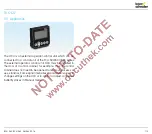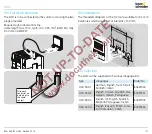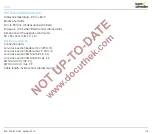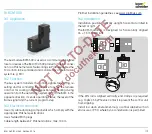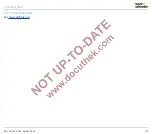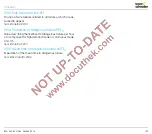
BCU 560, BCU 565 · Edition 02.16
128
20 .7 Warning signal
The BCU reacts to operating faults, e.g. in the case of perma-
nent remote resets, with a warning signal. The display blinks
and shows the corresponding warning message. The warning
signal ends once the cause has been eliminated.
The program sequence continues. No fault signal is activated.
20 .8 Timeout
For some process faults, a timeout phase elapses before the
BCU reacts to the fault. The phase starts as soon as the BCU
detects the process fault and ends after 0 to 255 s. A safety
shut-down or fault lock-out is then performed. If the process
fault ends during the timeout phase, the process continues
as before.
20 .9 Lifting
After positioning the actuator IC 20, the BCU checks by means
of brief lifting whether its feedback input (terminal 52) has been
activated by the correct output signal from the actuator. The
signal of the relevant control output (ignition, OPEN, CLOSE) is
switched off briefly for this purpose. While the signal is switched
off, the BCU may not detect a signal at the feedback input.
20 .10 Air valve
The air valve can be used
– for cooling,
– for purging,
– to control the burner capacity in ON/OFF mode and in
High/Low mode when using a pneumatic air/gas ratio
control system.
20 .11 Diagnostic coverage DC
Measure of the effectiveness of diagnostics, which may be
determined as the ratio between the failure rate of detected
dangerous failures and the failure rate of total dangerous
failures
NOTE: Diagnostic coverage can exist for the whole or parts
of a safety-related system. For example, diagnostic coverage
could exist for sensors and/or automation system and/or
control elements. Unit: %.
from EN ISO 13849-1:2008
20 .12 Operating mode
IEC 61508 describes two modes of operation for safety func-
tions. These are low demand mode and high demand or
continuous mode.
In low demand mode, the frequency of demands for operation
made on a safety-related system is not greater than one per
year and is not greater than twice the proof-test frequency.
In high demand mode or continuous mode, the frequency of
demands for operation made on a safety-related system is
greater than one per year or greater than twice the proof-test
frequency.
See also IEC 61508-4
Glossary


